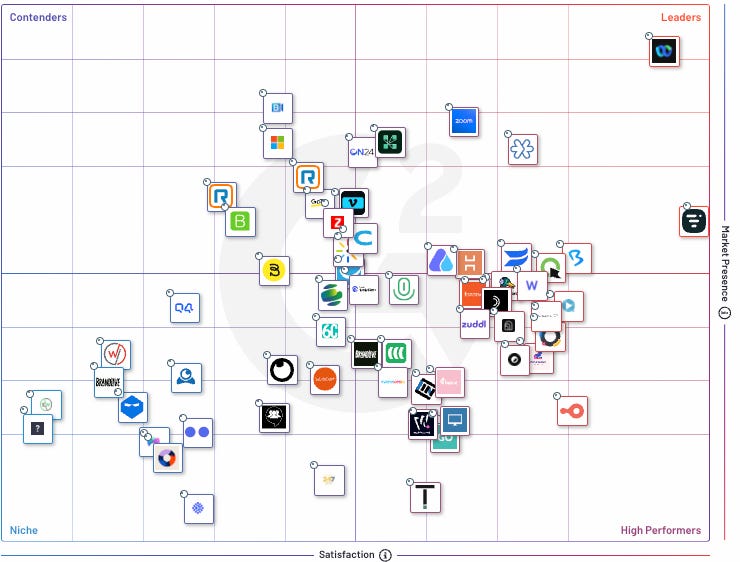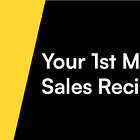How to prep like a top sales rep
5 critical steps for crushing day 1
Prep time: 4 min
Hello Chef! Welcome back to this week’s edition of the Outbound Kitchen newsletter!
Every Sunday, we serve up a quick, tasty insight into the most effective outbound recipes you can use right now—all in 3 minutes or less.
This is Part 1 of 3: How to Start Your New Sales Role.
Let’s get cookin’ 👇
The Outbound Kitchen is brought to you by:
Grow your outbound pipeline - 37k+ sales pros trust Lemlist as their outbound tool:
Build the perfect lead list with verified email addresses
Personalize your emails and LinkedIn messages at scale
Automate multi-channel outreach without sounding like a robot
Stay out of the spam folder and in front of your prospects
Everything you need to scale your outbound efforts and see real results.
Last week, an SDR at a webinar platform asked me, “I’m just starting as an SDR. How should I strategize and plan my work and outreach as a new SDR in this company?”
Here's my reply:
Getting up to speed in a new sales role is tough. You’re learning the industry, your Ideal Customer Profile (ICP), buyer personas, products, prospecting process, and tools—all at the same time.
If the onboarding isn’t great, it can take months to really get productive. Most of the time, you’re hit with a bunch of generic info dumbs, with little hands-on practice or real-world application.
The result? You take longer to ramp up, miss quotas, and end up frustrated. A lot of SDRs leave or get let go because they weren’t set up for success from the beginning.
That’s why you shouldn’t rely only on your company’s onboarding. You need your own plan, with clear goals for learning, training, and outreach.
This newsletter series will help you build that plan, starting with:
Prepping before day 1
Your 7-14-30 Day Plan
Taking ownership of your development
Here are 5 ways to prepare for your new role before day 1:
#1: Start prepping before day one
The first few weeks at a new sales role are overwhelming, with a lot of information to absorb. But getting a head start before your official onboarding helps you stand out, builds your confidence, and keeps you from feeling lost. Plus, it makes a great first impression with leadership, which can really set you up for success.
1 - Do your homework on the company
Figure out who you’re selling to (ICP and buyer personas)—are they marketing leaders in SaaS or marketing agencies?
Dive into your company’s website—check out use cases, case studies, and features to see how the software tackles issues like low engagement, lead gen struggles, or post-event analytics.
2 - Learn about the ecosystem
Get familiar with tools that integrate with your webinar software, like HubSpot, Pardot, or ABM tools (6sense, Demandbase). Knowing how these fit together helps you confidently explain how your product solves bigger problems like data silos or disconnected workflows.
3 - Check out the competition
If your product is in a crowded space (like the 127 companies in the webinar category on G2), see what your competitors are doing. This will help you shape your pitch—prospects are probably already using something, and they might be frustrated with their current tool.
4 - Level up your industry knowledge
Depending on your prospects’ industry (SaaS, marketing agencies, etc.):
Subscribe to newsletters like “Webinar Insights” and “The Virtual Event Digest” to stay in the loop on how businesses use webinars. Tune into podcasts like “Revenue Vitales,” “The Webinar Way,” or “Engage Your Audience” for best practices and case studies.
#2: First impressions matter more than you think
Your first impression can shape your rep in the company. Show up prepared, ask smart questions, and take initiative to stand out as a top performer. Building momentum early gets you respect from both peers and leadership.
1 - Practice your pitch
Before your first day, get comfortable with your elevator pitch. Focus on how the webinar software solves real problems. For example: “Our platform’s interactive tools like live polls and Q&A can boost engagement by 35%, tackling low participation in virtual events.” This shows you’re prepared and leaves a solid impression.
2 - Ask well researched questions
Instead of asking basic stuff, come with well-researched questions about how the product helps solve customer challenges. For example: “How has our software helped education clients deal with low engagement and attendance in online classes?”
3 - Consume content related to your Company
Check out social media mentions, articles, and what people are saying about your company to understand its market presence. You could say something like, “I saw our case study on how XYZ Corp boosted lead gen by 50% with our lead capture features was getting a lot of attention on LinkedIn.”
#3: Own your onboarding plan
Don’t just rely on the company’s onboarding. Take control to set yourself up for long-term success.
1 - Create a 7-14-30 day plan
Map out what you want to achieve in your first 7, 14, and 30 days. This could include learning how the software solves customer problems, starting prospecting, and doing mock demos. Adjust the plan based on your experience.
2 - Get feedback from your manager
Share your 7-14-30 plan with your manager to get their input. For example, “In my first 14 days, I’ll run 5 mock demos focused on how our software boosts engagement and lead gen by solving issues like low interactivity. What do you think?”
3 - Set early check-Ins
Schedule a 1:1 meeting before you start to clarify expectations and learn how your manager prefers to communicate. Ask questions like, “What are the key problems our software solves, and how do we measure success?”
#4: Get early access to sales materials
Shorten your learning curve by reviewing key materials before day one to build confidence.
1 - Ask for call recordings
Request recordings of successful sales (and cold calls) calls where reps show how the platform solves problems like low engagement or lead generation.
For cold calls: Focus on how they handle common objections and what questions they ask to spark curiosity.
For sales calls: Pay close attention to how they tackle objections and position the platform as the solution.
2 - Check out winning outbound messaging
Go through email sequences and cold call scripts that have worked well with your audience. Learn why certain subject lines, value props, or CTAs hit the mark, and use them in your own outreach.
3 - Practice cold calls
Run through cold call scenarios that highlight how the platform fixes common issues. For example, if they say, “We struggle with engagement,” you can respond with, “That’s exactly what our platform is built for. Features like Q&A and polls can boost participation by up to 35%.”
#5: Don’t just rely on company onboarding
Your company’s onboarding will help, but taking extra steps will speed up your learning and make you stand out.
1 - Set personal goals
Decide when you’ll start prospecting or run your first demo. For example, aim to do your first demo within the first 10 days.
2 - Reach out to colleagues
Connect with experienced reps for advice or practice. Ask, “What’s the most common objection you get, and how do you position our webinar platform as the best fix for their issues?”
3 - Reach out to reps in the industry
Talk to reps at companies like HubSpot or 6sense (not competitors) for tips. Ask, “What’s the most common objection you face, and how do you position your platform as the best solution for those challenges?”
4 - Tweak your approach
Use feedback from early calls and demos to improve. If people mention low engagement, focus on how the platform’s live polls and chat features tackle that problem.
So, what’s next? Let’s dive into what you should be doing in your first month.
Check out part 2 here ⬇️
P.S. I’d love to hear your thoughts—what helps you when starting a new role?
Now you have ideas to prep your new role before day 1 and improve your success.
That’s it!
I hope this helps with your outbound journey.
Keep cooking up those great recipes!
✌️👨🍳
Elric, The Outbound Chef
Say hi 👋 on LinkedIn, YouTube, Spotify, or X.
Still here? I need a quick favor from you—just 30 seconds.
I’m thinking about launching a paid product for sales reps in Q4. Here’s a few ideas, but I’m open to yours too! Shoot me an email at bonjour@elriclegloire.com with your thoughts.
For now, I just want to validate a few options (let me know below with the poll):
Sales Nav Guide ($9.99 digital, $19.99 physical) – A lot of reps I know don’t really know how to use Sales Nav. There’s so much you can do with it to start conversations, prioritize accounts, etc.
Newsletter: Prospect with AI ($19.99 per month) – AI isn’t here to replace you, haha, but I’ve learned a lot about how to use AI in outbound. This newsletter would train the next-gen of sales reps.
Newsletter: Podcast takeaways ($9.99 per month) – I get tons of questions from reps about podcast transcripts, tools, cold call scripts, and key takeaways. This would give you everything in one place, perfect if you listen to a lot of episodes.
When you're ready, here's how I can help:
Need help with your outbound motion? Book your 40-minute Outbound Consulting call here.
Outbound Private Chef:
Part-time: I design, build AND execute your outbound strategy and team
Coaching/Advising: Tailored guidance for your outbound strategy and team's success
If you are interested, email bonjour@elriclegloire.com or reply to this email.
Want to promote your product or yourself to 3,221 subscribers by sponsoring this newsletter, or learn more about other sponsorship opportunities with Outbound Kitchen? Email bonjour@elriclegloire.com or reply to this email.




